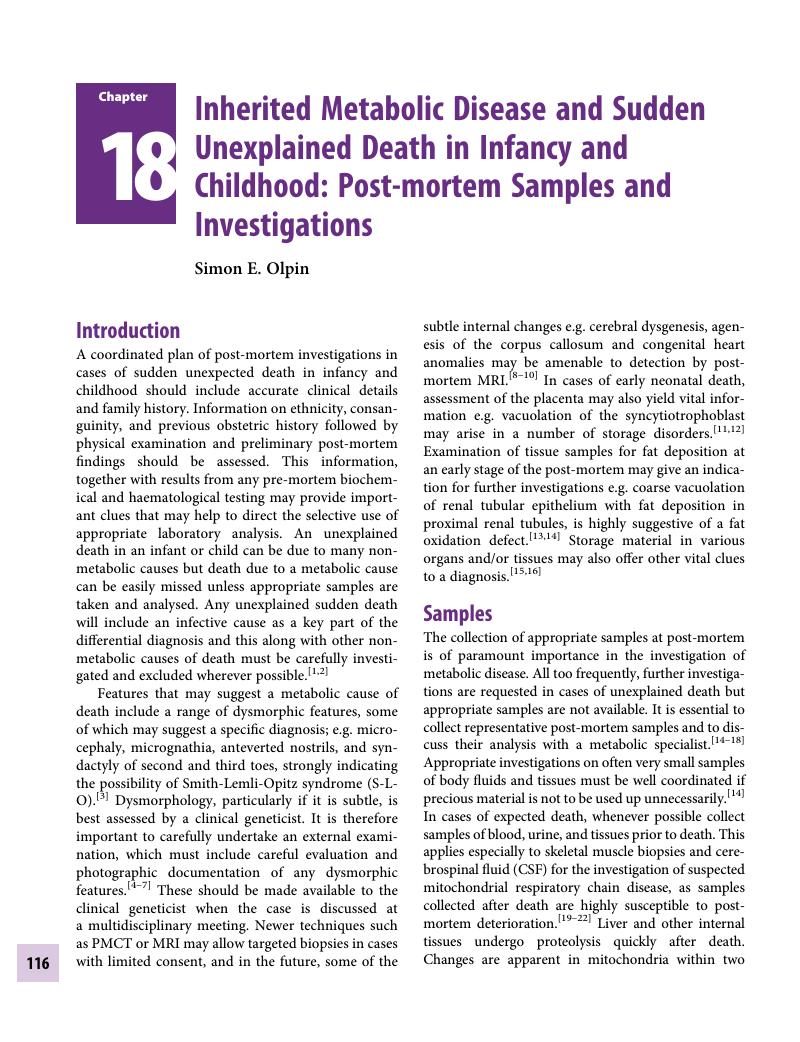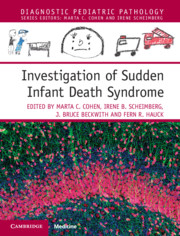Book contents
- Investigation of Sudden Infant Death Syndrome
- Diagnostic Pediatric Pathology
- Investigation of Sudden Infant Death Syndrome
- Copyright page
- Contents
- Contributors
- Foreword
- Preface
- Section 1 The History of SIDS
- Section 2 The Parents
- Section 3 Legal Framework
- Section 4 Best Practices Protocols of Investigation of Sudden Unexpected Death in Infancy and Childhood
- Section 5 Autopsy Findings
- Chapter 14 Imaging Findings on Autopsy
- Chapter 15 Neuropathology of SIDS
- Chapter 16 Post-mortem Microbiology: Sampling and Interpretation
- Chapter 17 The Investigation of Poisoning in Infants and Young Children
- Chapter 18 Inherited Metabolic Disease and Sudden Unexplained Death in Infancy and Childhood: Post-mortem Samples and Investigations
- Section 6 Epidemiology and Risk Factors
- Section 7 Pathophysiology
- Section 8 SUDI/SUID Which is Not SIDS
- Index
- References
Chapter 18 - Inherited Metabolic Disease and Sudden Unexplained Death in Infancy and Childhood: Post-mortem Samples and Investigations
from Section 5 - Autopsy Findings
Published online by Cambridge University Press: 04 June 2019
- Investigation of Sudden Infant Death Syndrome
- Diagnostic Pediatric Pathology
- Investigation of Sudden Infant Death Syndrome
- Copyright page
- Contents
- Contributors
- Foreword
- Preface
- Section 1 The History of SIDS
- Section 2 The Parents
- Section 3 Legal Framework
- Section 4 Best Practices Protocols of Investigation of Sudden Unexpected Death in Infancy and Childhood
- Section 5 Autopsy Findings
- Chapter 14 Imaging Findings on Autopsy
- Chapter 15 Neuropathology of SIDS
- Chapter 16 Post-mortem Microbiology: Sampling and Interpretation
- Chapter 17 The Investigation of Poisoning in Infants and Young Children
- Chapter 18 Inherited Metabolic Disease and Sudden Unexplained Death in Infancy and Childhood: Post-mortem Samples and Investigations
- Section 6 Epidemiology and Risk Factors
- Section 7 Pathophysiology
- Section 8 SUDI/SUID Which is Not SIDS
- Index
- References
Summary

- Type
- Chapter
- Information
- Investigation of Sudden Infant Death Syndrome , pp. 116 - 126Publisher: Cambridge University PressPrint publication year: 2019



